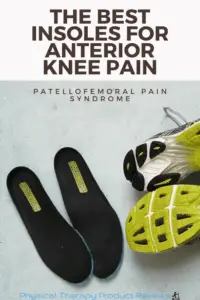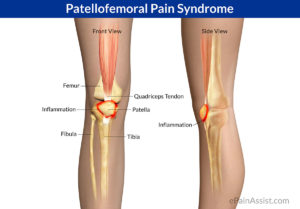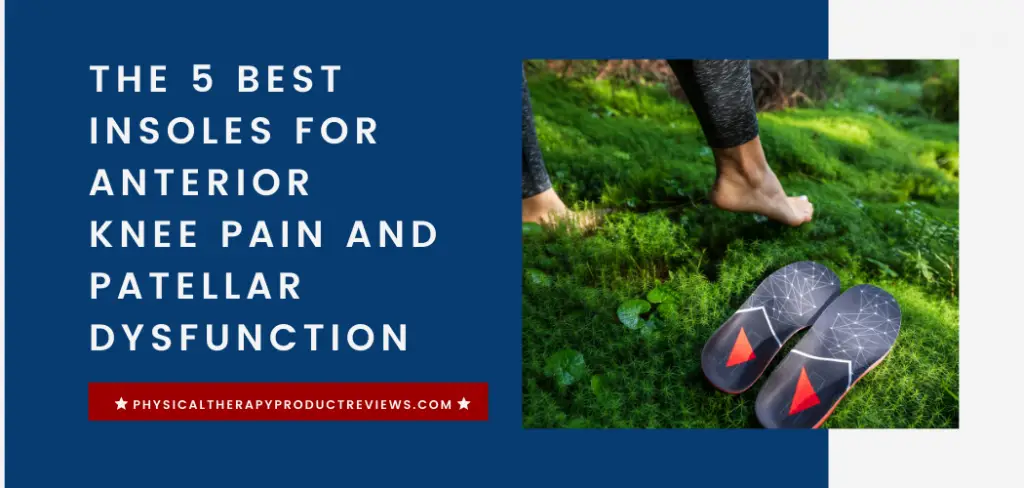 The knees are complex joints that play a central role in our ability to exercise, labor, and perform routine activities. With so much repetitive use, there’s no wonder knee injuries and knee pain are common.
The knees are complex joints that play a central role in our ability to exercise, labor, and perform routine activities. With so much repetitive use, there’s no wonder knee injuries and knee pain are common.
Knees have many functions, including stabilization, maintaining balance, weight-bearing, and the overall task of enabling the successful bending and rotation required for most of us to go about our daily lives.
When you’re suffering from knee pain, however, normal activities like running, climbing and descending stairs, or movements required for work or recreation, can be difficult and uncomfortable. Though there are a variety of reasons for knee pain, one common cause to look out for is Patella Tracking Dysfunction, also known as Patellofemoral Syndrome.
Comparison Table for Meniscus Braces
| Name | Picture | Price | Best Feature | Our rating | Best Price |
|---|---|---|---|---|---|
| Superfeet BLUE Professional |
 |
$$ | Great durability and maximum support | 9.7/10 | See Current Price |
| Physix Gear Sport Full Length Orthotic |
 |
$ | Great price point for an insole | 9.5/10 | See Current Price |
| Walkhero Orthotic Insoles |
 |
$ | One of the most popular insole on the market | 9.5/10 | See Current Price |
| FootBalance QuickFit Control Insoles |
 |
$$ | Great for athletic footwear such as cleats or basketball shoes | 9.3/10 | See Current Price |
| Stride Semi-Custom Insoles |
 |
$ | Great price point and easy returns | 9.2/10 | See Current Price |
What is Patellofemoral Syndrome?
Patellofemoral Syndrome is a condition in which the patella, or knee cap, shifts during the bending and straightening of the leg. The patella is meant to glide smoothly along a groove in the Femur called the Trochlea, and, in fact, there are many components in the knee that help to keep it tracking properly.
Problems with any of these components can lead to a “tracking” dysfunction, which causes friction and potential overload to the system and therefore pain. The pain associated with Patellofemoral Syndrome is “anterior knee pain” because––as the name suggests––it is felt in the front of the knee, or in the patella region.

Patellofemoral Pain Syndrome Explained

Anatomy of The Knee and Patella Region
The patella is an almost diamond-shaped bone at the front of the knee that acts as a “cap,” protecting the inner workings of the knee joint. This includes the ends of the femur (thigh bone) and tibia (shin bone), along with tendons, ligaments, cartilage, and other soft tissue. Cartilage lines the underside of the patella, helping it glide smoothly along the trochlear groove located on the end of the femur. The tendons and ligaments help to stabilize the patella and keep it in its proper place.

Symptoms of Patellofemoral Syndrome
Pain is the most commonly reported symptom of Patellofemoral Syndrome; however, it’s important to note the type and location of the pain, as well as when it improves or worsens. Some signs the pain may be a result of Patellofemoral Syndrome are as follows:
- The pain is a dull ache and is localized under, in front of, or around the knee cap
- The pain is worse with exercise that requires frequent bending and straightening of the knee
- The pain is worse sitting with bent knees for a prolonged period of time
- There is clicking, popping, or grinding of the kneecap
- The onset of the pain occurred after a change in frequency or intensity of physical activity, such as a sudden change in an exercise routine
- In severe cases, the knee cap may be dislocated resulting in extreme pain and swelling
Diagnosing Patellofemoral Syndrome
Diagnosing Patellofemoral disorder is done by exclusion more than by specific testing. Your physician may order x-rays or an MRI but these are often not needed and may not provide any valuable information needed to diagnose other than to rule out intra-articular pathology.
Diagnostic criteria for Patellofomeral pain syndrome includes:
- Pain behind the knee cap or around the knee cap AND
- Reproduction of symptoms with squatting, stairs, prolonged sitting, and other activities with the knee joint loaded
- Exclusions of other conditions that may cause anterior knee pain
Do Orthotics Help with Knee Pain
Depending on the cause of your anterior knee pain, orthotics could be all you need to eradicate your symptoms.
For optimal knee function and the appropriate positioning of the patella during movement, it is important to maintain healthy hip and leg alignment, which will also prevent prolonged pronation. In turn, proper alignment of the foot and ankle helps to correct overall alignment and has a positive impact on knee health.
Although pronation is normal––it is the inward rolling movement of your foot as you step down, and an important motion for absorbing shock (and protecting the knee!)––over-pronation or prolonged pronation, which can be caused by injuries and biomechanical issues, can impede the normal patellofemoral range of movement.
Orthotics support the arch of the foot, keeping the whole leg in alignment and therefore preventing patella tracking dysfunction and relieving pain.
What to Look for in an Orthotic for Anterior Knee Pain
- Comfort – Make sure they are properly fitted to your shoes and your feet and are comfortable enough to wear throughout the duration of your activities.
- Arch support and height – The right height and support for the arch are important factors, but keep in mind that you don’t want the support to be so rigid it doesn’t allow for healthy pronation.
- Cost – Don’t let the price determine the orthotics you choose. Cheap or expensive, if they aren’t the right insoles for you, they could end up doing more harm than good.
- Shock Absorption – Padding, especially at the heel, will absorb shock and lessen the impact on your joints.
- Cushioning – Comfort is important for footwear, and cushioning certainly adds comfort; however, do remember that a combination of rigidity and flexibility is advised for the best support.
FAQ About Insoles and Knee Pain
Do Shoe Insoles Help with Knee Arthritis?
For the most part no, insoles won’t help with pain due to knee arthritis. In a study researchers found it may help with a few people but once arthritis has advanced to a certain stage, which includes pain generation, insoles usually aren’t effective.
Are Insoles Better for Flat Feet or High Arches with Knee Pain?
Typically, insoles are most effective for high arches but with patellofemoral any change in loading or mechanics in the knee might help.
Can Shoe Insoles Cause Knee Pain?
Sometimes when you start wearing new insoles it can cause a new loading pattern in the knee joint. If you experience new pain after wearing insoles it should away within a few weeks.
Can Shoe Insoles Help with Knee Pain but Make Hip Pain Worse?
Similar to any changes in shoes or other footwear any new insoles can cause new loads on other joints. Any new pain in the hip joint should go away within a few weeks.
Can you Wear Insoles After a Total Knee Replacement?
If you have worn insoles for quite sometime before the knee replacement then you can use the insoles after surgery too
Often times after surgery the alignment of the knee is changed so we often recommend going without the insoles at first and see how it goes.
The Best Insoles For Anterior Knee Pain
Superfeet Blue Insoles
Summary: The Superfeet Blue Insoles Medium Arch are made with high-density foam, a stabilizer cap for structure, a heel cap for keeping the foot in place, and a medium profile that offers quality support and fits a variety of shoes.
Pros:
- Excellent heel support
- Fit shoes well
- Durable
Cons:
- Some customers say they take a while to break-in
Physix Gear Sport Full Length Orthotic Inserts
Summary: The Physix Gear Sport Full Length Orthotic Inserts are designed with performance in mind. The arch support, durable materials, and non-slip technology make these a great choice for athletes.
Pros:
- Thin enough to fit a variety of shoes
- Great for anyone looking primarily for arch support
- Affordable
Cons:
- Very little cushioning
Giotto Orthotic for Anterior Knee Pain
Summary: The Giotto Orthotics boasts versatile support, durability, heel stability, antimicrobial material, and semi-rigid arch support. In addition, the orthotics come with a 30-day unconditional replacement or refund.
Pros:
- Lasting arch support
- Don’t require much breaking in
- Excellent heel stability
Cons:
- Some customers report they are not ideal for wide feet
FootBalance QuickFit Control Insoles
Summary: The FootBalance QuickFit Control Insoles are moldable foot supports that provide a custom fit and assist with proper alignment and posture. They fit well in tight-fitting performance footwear such as cleats, skates, ski shoes, and so on.
Pros:
- Comfortable custom fit
- Great for sport footwear
- Full refund within 30 days of purchase
Cons:
- Not as ideal for wide feet
Tread Labs Stride Insoles
Summary: The Tread Labs Stride Insoles are semi-custom orthotic inserts with stabilizing heel support and firm and flexible arches to help with alignment and pronation issues.
Pros:
- Good shoe fit
- Great arch support
- Great heel support
Cons:
- Not ideal for wide feet
- Some customers report that while walking the rubber and plastic produce squeaking sounds
Conclusion:
Anterior knee pain is inconvenient at best and often debilitating. But pain is a sign that something is wrong, and in the case of anterior knee pain, that something is often misalignment causing patellofemoral tracking dysfunction. To eradicate pain, it’s necessary to get to the root of the problem, and for many, the solution to anterior knee pain is simply finding the right orthotics to support their feet and ankles and improve overall alignment.
Works Cited:
“Patellofemoral Pain Syndrome.” American Academy of Orthopaedic Surgeons, Feb. 2015, https://orthoinfo.aaos.org/en/diseases–conditions/patellofemoral-pain-syndrome/
Juhn, Mark S. “Patellofemoral Pain Syndrome: A Review and Guidelines for Treatment.” American Family Physician, 1 Nov., 1999, https://www.aafp.org/afp/1999/1101/p2012.html
“Patellofemoral Dysfunction.” Sydney Orthopaedic Trauma and Reconstructive Surgery, n.d., https://orthotrauma.com.au/knee-conditions/patellofemoral-dysfunction/
Barclay, Tim. “Knee Joint.” Innerbody, 16 July 2019, https://www.innerbody.com/image/skel16.html
Gross, Michael T., Judy L. Foxworth. “The Role of Foot Orthoses as an Intervention for Patellofemoral Pain.” Journal of Orthopaedic and Sports Physical Therapy, issue 11, vol. 33, pp. 661-670, November 2003, https://www.jospt.org/doi/pdf/10.2519/jospt.2003.33.11.661
Appold, Karen. “Reasons Orthotics Help Knee Pain.” Chiropractic Economics, 2 July 2015, https://www.chiroeco.com/7-ways-orthotics-can-help-knee-pain/
Other Great Rehab Related Articles
GLP Weight Loss and Back Health: Effective Strategies and Insights
How to Stay Active After Cervical Fractures: Expert Tips and Advice
Dealing with Painful Stairs After Ankle Replacement Surgery
Walking After a Total Ankle Replacement: Tips for a Successful Recovery
Exercises While Non-Weight Bearing After Ankle Replacement: Elevation, AROM, Leg Raises, and More
Ankle Pain with Stairs: Causes and Home Treatment Options
Disclaimer: The information provided in this post is for educational purposes only. This is not a substitute for a medical appointment. Please refer to your physician before starting any exercise program.











Comments are closed.